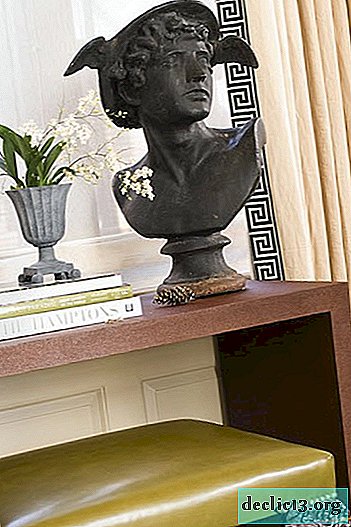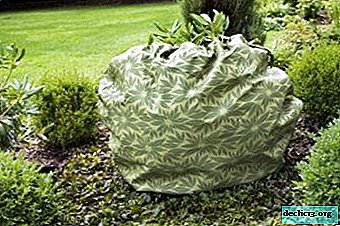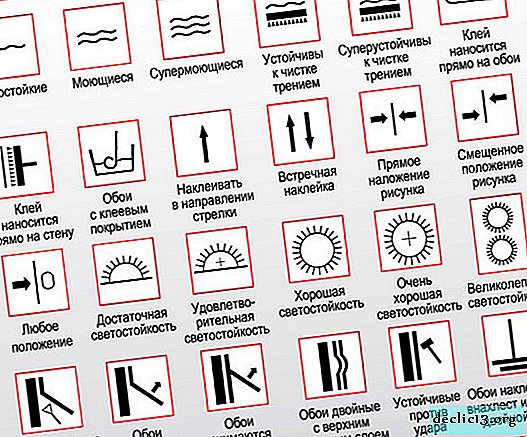How to clean the iron from scale inside

Depending on the frequency of use, you need to periodically clean the iron from scale inside. If necessary, the procedure is accompanied by a cleansing of the sole and clogged channels for the release of steam.
The use of tap water for an iron with a steamer provokes the formation of scale inside the tank. The liquid evaporates during operation, and the mineral substances contained in it settle in the ironing device. The rate of plaque formation and its layer depend on the intensity of use of the device, the hardness of the water consumed. Scale worsens the thermal conductivity of the sole, provokes damage to things (after ironing, red hard-to-remove spots remain).
You can remove hard deposits, mold, rust and traces of burnt synthetic materials with the help of specialized and household tools, familiar products located in a medicine cabinet, kitchen or bathroom cabinet.
Effective folk remedies

Completely remove limescale deposits from the tank using acidic solutions. At home, they can be prepared on the basis of table vinegar and citric acid. For safety, follow the instructions below, try to inhale the vapors as little as possible.
Lemon acid
Carefully inspect the heating surface of the iron, paying attention to the steam vents. If they are heavily clogged, first clean them, otherwise the caustic solution will not be able to leave the tank in the “correct” and most effective way. For cleaning, prepare cotton buds, a syringe, and a container for draining dirty liquid.
Step-by-Step Action Plan
- Dilute 25 grams of citric acid powder in a glass of hot water. Stir thoroughly, it is unacceptable that whole crystals get into the iron.
- If limescale deposits heavily clog the holes in the sole, blot them with an acid solution using an ear bud.
- Pour some prepared liquid into the tank through the openings on the sole using a syringe.
- Pour the remaining solution into the appliance container in the standard way.
- Heat the iron as much as possible, leave it horizontal for 5-10 minutes, without pulling the power plugs out of the outlet.
- Unplug the appliance.
- Shaking the device vigorously, let off steam over the prepared container. Be prepared for an unpleasant color spray, pungent smell and "hiss".
- Rinse with clean water, gauze process the cooled sole.
At the end of the procedure, check the device for any rags. Do not forget to pour clean water. If traces of limescale are found, repeat the procedure several times.
IMPORTANT
Do not make the acid solution more concentrated, even if the steam outlet has become impassable. Scrupulously process them from the outside. Too concentrated solution will damage the internal parts of the iron, which can cause absolute unsuitability, even for repair.
Vinegar
The method of removing calcareous deposits is almost identical to the previous embodiment. The solution is prepared from table vinegar and water, combined in an equal amount. The resulting composition should be enough to fill 0.3-0.5 of the volume of the iron tank. Perform the procedure in a well-ventilated area at the distance of the most outstretched arm so as not to inhale corrosive vapor.
ALTERNATIVE:instead of lemon and vinegar, you can use mineral sparkling water. It contains acid, the activity of which is sufficient for the breakdown of calcareous deposits.
Video tipsSpecialized Purchased Chemistry

Iron manufacturers seldom take into account that not every user has distilled, filtered or settled water at home to fill the appliance. Therefore, third-party import and domestic companies produce specialized chemicals for cleaning water-consuming equipment from lime deposits and carbon deposits.
Decalcifier
A popular descaler for ironing at home. It is inexpensive, but it performs the task efficiently. According to the instructions, you need to dissolve 0.5 tsp in a glass of water. drug, pour the resulting liquid into an electrical appliance. Then the following actions are performed.
- Heat the iron upright to maximum and unplug it.
- Place the sole on a special stand.
- After 30 minutes, let off steam with softened lime deposits. Alternative: pour dirty liquid through the water intake hole.
- Rinse inside with clean water.
Top house
German-made cleaner that effectively removes scale and deposits inside and on the sole of the iron. The composition contains additives that prevent damage to the treated surface. The product is used in accordance with the accompanying instructions.
- In 100 ml of water add 50 ml of a cleaner and mix.
- Pour the resulting fluid into the reservoir of the device.
- Put the iron in an upright position and plug it into the network.
- Set the temperature mode corresponding to the ironing of natural fabrics with steam.
- After heating, disconnect from the mains, put in a horizontal position on a special stand or 2 bars (pencil).
- After 10 minutes, let off steam over a container by vigorously shaking the apparatus.
Cillit bang
In the line of this popular household chemicals, there is also a tool for cleaning irons. With a small flow rate (only 50 ml) in half an hour it will be possible to update the appliance, return the former heating rate of the sole, radiance and smoothness of the surface. The method of use is indicated in the instructions and almost does not differ from the previous one.
Pencil
They are used to clean the soles of calcareous deposits and carbon deposits. It will help to free the steam vents, which will temporarily prevent the appearance of red spots on clothing. To restore the normal operation of the appliance, it will still have to be cleaned from the inside. A pencil is used as follows.
- Pour water into the tank.
- Turn on the iron by setting the desired temperature.
- Rub the heated surface with a pencil.
- Iron the old unnecessary piece of rough matter.
Using a pencil provokes a pungent odor, so the procedure is best performed with the window open, on the balcony or loggia.
IMPORTANT
- When releasing steam from the iron during cleaning, do not stop until all liquid has passed.
- At the end of the procedure, polish the sole by carefully ironing a soft, lint-free cloth, such as gauze.
Helpful information
Integrated cleaning systems

Almost all modern irons, located in the category of the most expensive heating units, are equipped with a built-in self-cleaning system. Some models integrate anti-lime rods to prevent local scale formation. Remember where the instruction from your device lies, and be sure to look for items related to cleaning.
Self-cleaning function
Consider an approximate scenario of the manipulations performed.
- Pour the maximum permissible amount of water into the tank.
- Turn on the iron by setting the maximum temperature.
- Observe the appliance: it should heat up, disconnect itself and heat up again.
- Disconnect from the network.
- Place over a basin, bathtub or any container that is easy to wash.
- Press the button that launches the "Self-cleaning" program.
- The release of steam and contaminants may be accompanied by intense shaking of the appliance to achieve maximum results.
- Rinse the tank with clean water.
- Wipe the cooled sole with a dry rag.
Do not iron anything immediately after cleaning - allow the device to cool. Subsequently check it on the old unnecessary thing. If necessary (for example, if the device is very dirty), the "Self-cleaning" function can be started several times in a row to achieve the desired result.
Anti-scale system
Such a mark on the iron or an item in the user manual is not an advertising ploy. Many devices have cassettes with special water softening granules located in tanks. Anti-lime cartridges are consumed slowly, which allows you to keep the iron in good condition for many years without additional cleaning.
Some models integrate anti-lime rods for mechanical filtration of water. Lime deposits remain on them. The core does not need to be replaced - it is enough to remove it from the iron once a month and lower it into any of the solutions:
- citric;
- soda;
- acetic.
After 2 hours, the precipitate on the rod will dissolve, and the latter can be rinsed with running water and installed back into the appliance.
How to clean the sole from soot

The task of cleaning the heating surface of the iron only seems easier than washing the inner tank. In fact, it is very important to consider what the sole is made of, since each material requires compliance with special care rules. For many devices, the use of abrasive compounds is unacceptable. Even when purchasing a pencil for cleaning, pay attention to whether it can be used to care for your device.
Teflon Coating Cleaning
To remove scale and pieces of burnt synthetics is real without nerves and damage to the appliance. Yes, Teflon requires careful care, but this does not mean that it can only be wiped with a soft cloth. Consider safe ways to clean the Teflon sole of the iron.
- Vinegar solution. Dampen cotton swabs, discs, or a dishwashing sponge in it. A little effort put into intense friction will clear Teflon.
- Baking soda. Combine it with a few drops of lemon juice and dishwashing liquid to get a mushy mass. Apply the mixture in a thin layer on the sole, and after half an hour rinse with warm water.
- Lemon acid. Dilute 10 g of powder in 100 ml of warm water. Put on medical or any moisture resistant gloves, moisten the flannel napkin in the mixture. Thoroughly treat the teflon surface, paying particular attention to the steam vents.
- Hydrogen peroxide. Moisten a cotton pad with it and treat the sole. Pay particular attention to the steam vents.
- Acetone / Nail Polish Remover. It is applied similarly to hydrogen peroxide. With it, you can remove the remnants of burnt synthetics, cellophane.
- Ammonia. Wipe the heating surface of the appliance with it, then treat it with warm, moist gauze.
- Hydroperite. Dissolve two tablets in a glass of water before use. Wipe the heated surface of the iron with the resulting liquid. The procedure is performed with the window open, since abundant emission of unpleasant fumes is possible.
- Toothpaste (not gel). With an old toothbrush you can gently clean the sole of not only the iron, but also the sneaker or sneaker. Remember to thoroughly rinse off the rest of the toothpaste from the surface.
- Teflon paddle / scraper. Heat the iron to the limit and carefully scrape off the teflon "helper" dirt, softened by heat. You can try to do this with a wooden spatula, only carefully.
- Candle. The method is applicable to newly soiled soles. The hot surface of the iron is rubbed with a candle, after which its remnants are removed with paper or cotton fabric. Prepare the pan in advance where the melting material will flow.
- Laundry soap. It is applied similarly to a wax candle.
IMPORTANT
- Intensive friction does not mean that you need to put too much pressure on the sole. Excessive pressure is fraught with the appearance of irreversible scratches and even microcracks. Intensive - easy but fast.
- If contaminants are found that cannot be removed by friction, make a lotion from the selected product. You can leave the iron on gauze soaked in the prepared solution for several hours.
Ceramic coating
Ceramics and glass ceramics want the same care as Teflon. Therefore, the same gentle methods that are described above apply here. In addition, take a look at the goods of household chemical stores - many tools and appliances intended for cleaning ceramic products are sold. Microwave cleaners are also suitable.
Do not use abrasive products, hard brushes and sponges. It is unacceptable to use salt, its crystals scratch the coating, due to which it can be completely peeled off. Use the above methods with a flap of soft natural fabric.
Hydrogen peroxide can bleach ceramics if necessary. When the layer of soot is thick or old, pour the selected product onto a white bag, making a small puddle. Put the iron off for several hours in it. Nagar "lag behind" the ceramic sole in a single piece.
Cleaning aluminum coatings
Aluminum material is capricious in leaving, because it is prone to scratching and often sticks to synthetic materials. To remove carbon deposits and residues of adhering tissue, use only a wooden spatula or a plastic brush-brush after pre-heating. It is also acceptable to use toothpaste, vinegar and other products suitable for Teflon coatings.
Severe contamination will help remove soda, but this should be done very carefully so as not to damage the material. At the end of cleaning, iron a piece of coarse cloth to improve the result. After the procedure, wipe the surface of the iron with a woolen cloth. If minor scratches appear, treat the sole with paraffin.
Steel Coating Cleaning
Steel is treated by any of the methods described. The strength of the material allows even salt to be used. To do this, you need:
- Pour fine-grained salt onto white paper or thick cotton. The newspaper should not be spread - printing ink will remain on the sole of the device;
- run a hot iron several times over it, checking if the sole is clean.
IMPORTANT
- Sometimes the steel surface has an additional coating for better gliding, so pay attention to whether it is as hardy as the base material.
- If there are small scratches on the sole, mix the salt with grated paraffin (a wax candle) - the roughness will be smoothed out.
Instead of salt, you can use soda. Mix it with water until a mushy state. This is a “cold” cleaning method - without heating the iron, wipe the problem areas with your own cooked paste.
Do not exclude sulfur from the arsenal of effective agents. Take the matchbox, and rub the sole of the iron with the side you light the matches on. After wipe with a worthless lint-free cloth.
The cleaning powder intended for ware perfectly copes with a deposit. It is enough to rub the contaminated surface with it.
Hot bath
This method of cleaning the soles of lime and soot is the most time-consuming, but also, undoubtedly, the most effective. Connecting the iron to the network is not required. Carefully read the recommendations and instructions before undertaking the implementation.
Would need
- Heat-resistant container with a height of 3 cm, which fits the entire sole of the iron.
- 2 small bars or even a pencil.
- Citric acid - 1.5 tbsp. l
- Table vinegar - 1 tbsp. l
- Baking soda - 2 tbsp. l
- Boiling water.
- Gas or electric stove.
Iron cleaning
- Pour citric acid, soda into the prepared container, pour in the vinegar. Everything is added in this order.
- Pour boiling water, filling 1 mm of the container from the bottom, stirring the cleaning composition.
- Place the iron steadily on bars or pencils.
- Add boiling water to completely cover the sole, but not to touch other parts, including rubber, plastic, electric.
- If the surface to be cleaned is too dirty, place a container on the stove and switch on the hotplate in the "Cooking" mode.
- After half an hour, remove the iron from the "bath" and carefully remove the softened soot with cotton.
- Rinse the inner tank.
- Wipe off the cleaned sole with a soft cloth.
The concentration of the solution can be increased with heavy pollution.
Useful tips and pollution preventionth

To prevent premature failure of the iron and accumulation of soot on the sole and inside, the following recommendations will help.
- Use water specified by the manufacturer. If this is not possible, stand for boiled water, install cleaning filters on taps or a reagent-free electromagnetic softener.
- Drain the tank after each ironing.
- Periodically iron gauze soaked in vinegar or lemon solution.
- Follow the rules for using the appliance, in particular, correctly set the temperature conditions for different types of fabrics.
These simple tips will not take much effort and time, but will extend the smooth functioning of the iron. All the recipes considered in the article have been tested by thousands of experienced housewives, so they will help to effectively fight scum and soot.

















